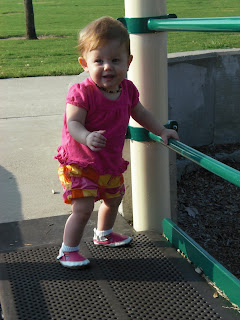After my last post I received a few emails asking about education in America. I love having so many international readers! So here is a basic overview to hopefully answer those questions. The photos will not be related to the information, but no one wants to read a post without photos, right?
Public school is available for grades Kindergarten (K), 1st - 12th grades in most states. K usually starts at 5 years old, though this does vary by state. Only 8 states require students start at 5 years old, 23 states require students start at 6 years old, 17 states require students start by 7 years old, and 2 states don't require students to attend school until they are 8 years old. Typically a student starting at 6-8 years old would just skip K and go into 1st grade. In fact, only 42 (out of 50) states require all school districts to offer Kindergarten. Very few states offer free education for all before Kindergarten. I can't find current numbers, but for 2009 there were only 3 states that offered universal pre-K.
In an antique fire engine, in the rain
Once a child is approximately 5 years old, they could attend public, private, charter, magnet, or home school. Before this age there are even more options! I'm going to just offer a very general overview.
Public preschool for children with disabilities (PPCD) is generally a free program for kids ages 3-5. This is through the local school district and while in the past it has been 5 days a week, many states have cut it back to just a few days and many of those are half days. To qualify for this program children must have a diagnosed disability, not speak English, or come from a low income household. Sometimes this is split into PPCD and HeadStart, but they are generally run by the same group so I just put them together.
Father/Son bonding with a cannon
Full time care is typically called daycare. Often this starts at 6 weeks, since that is how long maternity leave is in most cases. Usually children in daycare have a single working parent or two working parents. Care is typically offered from 6am-6pm year round and about half of the kids will attend all of those hours. This type of care, while sometimes having an educational element, many times focuses on meeting the basic needs of a large number of children. The phrase, "You get what you pay for" often describes daycare.
Mother/Daughter bonding with a cannon
Preschool is typically part time and only for 9-10 months of a year. The educational element is the main focus. These are typically reserved for families who have one parent at home or working part time. There are many different types of preschools and philosophies. Play based, center based, Montessori, Waldorf, worksheet based, religious, secular, and on and on.
Fighting over a book - as always
There is also a more relaxed and even more part time option generally referred to as a Mother's Day Out (MDO). These are typically just a few days a week (2-3) for a few hours. Many are exactly what they claim, just a chance for a parent to get out without kids. They offer socialization for the children and many times sanity for the parent. Almost all of the kids in these programs have a stay at home parent. These are usually the cheapest option and a few do offer some educational value. Most MDOs are religious.
Helping Dad with a "project" at work
There are also many children who do not attend any programs and stay at home with a parent until they are old enough for more formal education. As you can tell, the options are limited by socio-economic status, jobs, and money. A child in a good preschool will start K about 2 academic years ahead of those who attended daycare on average. There has also been a lot of research proving early education has a direct relationship to decreased crime in an area 15-20 years later. I should note, a parent teaching their child at home would count as early education, however the option of an academic preschool for those parents unwilling or unable to provide this has large societal implications for the future.
This is not a typical day for Dad at work
















